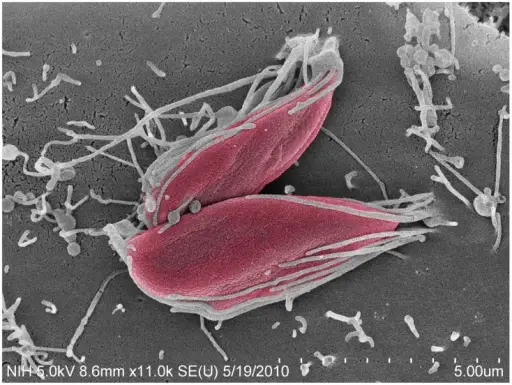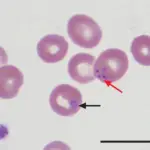Chagas disease infection, also known as American trypanosomiasis, is a tropical parasitic disease caused by Trypanosoma cruzi.
What is the Pathology of Chagas Disease Infection?
The pathology of chagas disease infection is:
-Etiology: The cause of chagas disease infection is a parasite Trypanosoma cruzi.
-Genes involved: Not applicable.
-Pathogenesis: The sequence of events that lead to chagas disease infection occurs when a kissing bug bites an infected person or animal, then bites another person. While biting, infected bugs deposit feces containing metacyclic trypomastigotes on the skin.
-Morphology: The morphology associated with chagas disease infection shows three morphological forms: the trypomastigote, the epimastigote, and the amastigote. Trypanosomes are present in the circulating blood. They are approximately 20 mm long and generally slender. They have a thin, irregularly shaped membrane, which can be seen using scanning electron microscopy.
-Histology: The histology associated with chagas disease infection shows mononuclear cell infiltration, edema, myocyte destruction, and fibrosis.
How does Chagas Disease Infection Present?
Patients with chagas disease infection typically are all genders of all ages. The symptoms, features, and clinical findings associated with chagas disease infection include eyelid swelling, headache, rash, loss of appetite, body aches, and swelling at the infection site.
How is Chagas Disease Infection Diagnosed?
Chagas disease infection is diagnosed by blood tests.
How is Chagas Disease Infection Treated?
Chagas disease infection is treated by medications such as benznidazole, or nifurtimox.
What is the Prognosis of Chagas Disease Infection?
The prognosis of chagas disease infection is good.



